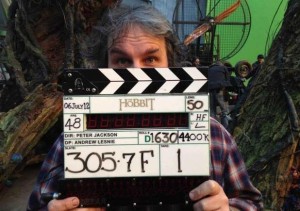Since I’m still a two-bit critic under the thumb of an embargo, I’m not allowed to talk about any major franchise fantasy prequel film directed by Sir Peter Jackson that I may or may not have seen at 11:00am on Thursday morning. So bear in mind this is not a film review, but a little chat about a bit of technology you may have coincidentally heard about lately.
======================
“The big thing to realize is that it’s not an attempt to change the film industry. It’s another choice. The projectors that can run at 48 frames can run at 24 frames – it doesn’t have to be one thing or another. You can shoot a movie at 24 frames and have sequences at 48 or 60 frames within the body of the film. You can still do all the shutter-angle and strobing effects. It doesn’t necessarily change how films are going to be made. It’s just another choice that filmmakers have got and for me, it gives that sense of reality that I love in cinema.”
–Peter Jackson
It’s very important that we keep the above quote in mind going forward.
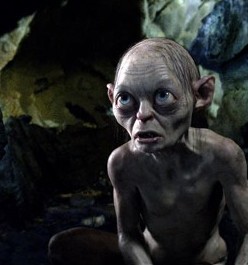 A Shadow In The East
A Shadow In The East
So first things first: it is unarguably the critical consensus that watching a feature-length film in 48fps is a jarring experience that brings an unprecedented level of clarity to the motion image. Appreciation for the advantages and disdain for the compromises inherent in this decision vary from person to person, and there is some agreement that repeated viewings and increased exposure smooths out the experience- specifically the impression of the footage being undercranked (read: sped up).
Second things second: When it comes to his new film, Peter Jackson doesn’t give a shit. Confident and unrepentant in interview after interview, the director has made it very clear he feels this is the future and that it is merely older viewers and film purists that will reject the format, or even care at all. This is after a long process of being pitched the technology by James Cameron (who has long sought to get Hollywood on board with HFR), being assured by his editors that exhibition tech was up to speed, and convincing Warner Brothers that they’d still have a normal looking set of films to release after their billionish dollars were spent.
The Wrong Conversation
Now here we are with around 450 theaters set to project The Hobbit: An Unexpected Journey in HFR 3D in the coming weeks. Thousands of news articles, blogs, editorials, and interviews have fixated on this tech for months now, with a first deluge after a rather poisonous demonstration at CinemaCon, and the second exploding now as more audiences see their first 2:40′ film that was shot and projected at 48 frames per second. Much of the conversation is based on contextualizaing 48fps in the same way we’ve looked at other filmmaking advances like 3D, digital photography, color, and synchronized sound.
Here’s the problem though: everyone seems to be thinking about 48fps the wrong way, including the filmmakers using the damn thing. You see, 48fps per second is not a format, it’s a creative, technological filmmaking tool.
“Well duh”, you might think. That’s an obvious enough qualification, but it has a big ramification in this dialogue we’re all having.
Imagine, if you will, a universe in which the Sam Peckinpahs and Zach Snyders never existed and slow-motion was a technology that had either never been thought up, or was never easy enough to manage. It’s as if, in that universe, Peter Jackson signed on to direct a film shot entirely in “new slow-motion technology”, and we’re all in that universe discussing how it doesn’t look the same, whether slow-motion is going to catch on with audiences, and if all movies are going to be shot in slow-motion in five years. It’s the same thing if you switched out “slow-motion” for “steadicam” or even “anamorphic.” This discussion is examining 48fps not as the acute filmmaking tool it can and should be, but instead as an entire filmmaking platform, which it shouldn’t necessarily be.
In other words, 48fps isn’t a canvas on which filmmakers do art, it’s the brush with which they apply the paint.
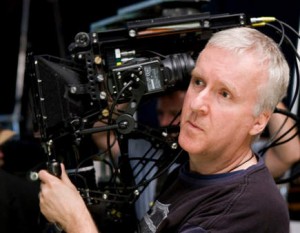 Blame It On The Filmmakers, Sorta
Blame It On The Filmmakers, Sorta
Ultimately you can lay the blame on the filmmakers like James Cameron and Peter Jackson, or even a critic like Roger Ebert (who was endorsing versions of high-frame-rate technologies years and years ago) for setting the tone of this conversation all wrong. It’s not really their fault, but it comes down to a case of people with progressive perspective still framing those perspectives in old-school thinking. I’ll explain.
Those involved or interested in the technology of filmmaking have known for some time that 24fps is an imperfect format with unfortunate drawbacks like severe strobing in pans. Ultimately 24 was an arbitrary rate of exposing motion picture film, chosen in the 20s largely because it was as slow as you could get and still keep sound in synch and have relatively believable motion. Cheaper. Easier. Etc. Etc. The issue comes from the fact that when solutions started becoming more feasible –cameras and projectors that could handle the speed and precision of a doubled frame rate– we were still stuck in a an all-or-nothing analog world, where the idea of mixing formats, shifting aspect ratios, artificially speed-ramping, creating giant mythical beasts in computers and all the other wonders of the digital age were still either impossible or really goddamned hard.
All of this to say is when guys like James Cameron were first seeing 48fps and beyond as a possibility, they were seeing it as a new all-or-nothing paradigm. Turns out, the very digital technology that has finally empowered a $250m+ blockbuster film to capture and exhibit in this format dictates that these are very much not all-or-nothing new paradigms. And thus came the moment when the filmmakers on the cutting edge were actually outrun by the technology they sought.
A Brush, Not The Canvas
Let us refer back to the quote from Mr. Jackson that I included at the top, specifically a latter portion…
“The projectors that can run at 48 frames can run at 24 frames – it doesn’t have to be one thing or another. You can shoot a movie at 24 frames and have sequences at 48 or 60 frames within the body of the film.”
The emphasis is mine, and it’s the most important note that seems to have been lost in this conversation.
You see, a movie doesn’t have to be shot entirely in 48fps to enjoy the advantages, in the same way a film doesn’t need to be shot entirely in slow-motion to exploit the artistic and aesthetic qualities of that tool. Virtually every viewer has agreed that 48fps footage offers some of the most beautiful vistas ever projected in front of audiences, that CGI creations look remarkably more present in real environments, and that action is often enhanced by the elimination of motion blur. The wonderful thing is that many of these things could be exploited in moments where it makes sense, while leaving others at the more dreamlike and comforting 24fps. Even elements within a frame can be isolated and included at 48fps amidst 24fps footage, as demonstrated several years ago by Douglas Trumbull and his Showscan team.
Now, granted, it’s not really clear how well that how isolation and frame mixing actually works, and whether that technique is even feasible for a blockbuster scale film and the constricted post-production schedules. Perhaps mixing elements is just as jarring, and ultimately going all-or-nothing makes more sense. However, it is not at all difficult to imagine a universe in which The Hobbit is not the first ever 48fps film but, in something resembling Nolan/Pfister’s push with IMAX footage in the Dark Knight trilogy, was instead the first ever film to feature 48fps footage. I’m almost salivating for the version of Jackson’s film (which I may or may not have seen or have opinions about) in which the gorgeous landscape shots, the more kinetic action sequences, and other key effects shots were presented in the stunningly clear 48fps, while the long stretches of more traditional drama remained in comfortable, magical 24fps. Hell, maybe keep it to just the landscapes for Part 1, and go from there!
Remember, Jackson shot his film in 48fps, so the 24fps version most people will be watching come December 14th is actually a down-sampled version of that footage with motion blur re-introduced. With that in mind, perhaps a sort of blur-ramping could have provided transitions between 24fps and 48fps images? Or perhaps a degree of introduced blur across the entire film could have bridged gaps between the different formats? Considering the profound amount of compositing, blending, touching-up, 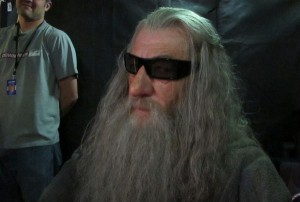 correcting, and grading that occurs on every frame of a blockbuster film these days, I’m skeptical that a more discrete level of control over this tool couldn’t be accomplished. In fact, I’m willing to bet that even as Jackson and Cameron go all in on the format, other filmmakers might manage more interesting things with a bit of multi-format, multi-layer thinking.
correcting, and grading that occurs on every frame of a blockbuster film these days, I’m skeptical that a more discrete level of control over this tool couldn’t be accomplished. In fact, I’m willing to bet that even as Jackson and Cameron go all in on the format, other filmmakers might manage more interesting things with a bit of multi-format, multi-layer thinking.
Ultimately I’m not actually suggesting I’ve thought this out more or understand the technologies better than these filmmakers, and it’s entirely true that many of these alternatives I’m positing might be too clunky to pull off, look just as jarring, or are just outright dumb. It’s obvious that a shift of frame-rate from one shot to another would be more noticeable than IMAX footage expanding from 35mm. Be that as it may, the point to take from this is that filmmaking technology has become a thing built on variable tools, and frame rate is now legitimately one of them. Comparisons to the virtually overnight changeover to sound in the late 1920s, or even the much uglier, stop-start shift to color* are much too narrow, and ideologically forces high-frame rates into a binary box in which they don’t belong.
I’m Not Lookin’ At Ya HFR, I’m Lookin’ Past Ya
So here’s the thing. Actually, here’s the many many things: Digital camera companies are undeniably within reach of (and are arguably eclipsing) the quality of 35mm, and are already looking beyond. 2013 will bring the first installation of laser projection systems that bring unprecedented brightness and clarity to movie exhibition. There are already cameras on the market that capture all available light information and allow for focus to be determined in post. Early experiments with new refraction techniques suggest we’ll one day work with lenses made from single, flat pieces of glass. 3D without glasses is already (primitively) a thing, as is early holography. All of this to say the manner in which we capture and consume motion images is changing so quickly and so massively, that I don’t know that our traditional view of what a movie is or how one watches them will stay the same even long enough for a 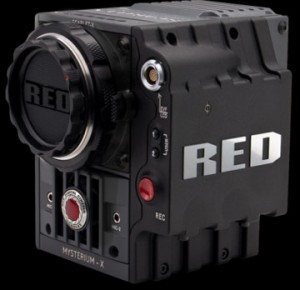 new frame rate or 3D to settle in as a dominant force. Perhaps cineplexes will all be gone in 10 years and we’ll be using home systems that both override our optic nerves and patch us into a digitally-connected hive consciousness that puts any audience experience you’ve ever had to shame.
new frame rate or 3D to settle in as a dominant force. Perhaps cineplexes will all be gone in 10 years and we’ll be using home systems that both override our optic nerves and patch us into a digitally-connected hive consciousness that puts any audience experience you’ve ever had to shame.
Shit, there won’t even be another 48fps film ready for release before the end of next year, and guess what- it will be the next Hobbit movie! This conversation is all abuzz now, but it will be another year before we even have it again, save for the odd filmmaker here and there announcing a 48fps project.
So I’d suggest that perhaps it’s way way too early to call the future of film in any direction, declare much of anything (except for photochemical film) dead, or otherwise suggest we’re going to settle into anything resembling a stable status quo… pretty much ever again.
In the meantime though, I hope filmmakers start thinking bigger than simply trying to drag us all along to the greener, more perfectly resolved and motion-blurless pastures. There’s interesting, crazy stuff to be done, and forcing an all-or-nothing revolution on the industry is sure as shit not one of them. I also hope we as critics and consumers can do our part to change how we discuss these technologies, with the hope that it trickles up to the ones funding and making these things. 3D, color, sound, frame rate… they’re are all just tools in service of a story. We should discuss them that way, which means things like not  demanding 3D as an entire concept die in a fire, so much as demanding it become a tool at filmmaker’s disposal rather than a mere guaranteed bump in surcharge revenue.
demanding 3D as an entire concept die in a fire, so much as demanding it become a tool at filmmaker’s disposal rather than a mere guaranteed bump in surcharge revenue.
Doing things any other way is just old-fashioned, strobing, juttery, standard definition, two-dimensional bullshit.
Thanks for reading everyone.
*The change to color was a tremendously ugly process that took decades, and left a lot of movies looking like shit as different techniques were tinkered with and different formats battled. In the way that we have the false impression that each political campaign is nastier than the last when they in fact started out as ugly as they’d ever get, the early shifts in film technology were much rougher than anything we’ve experienced with ugly digital movies or underlit 3D.
